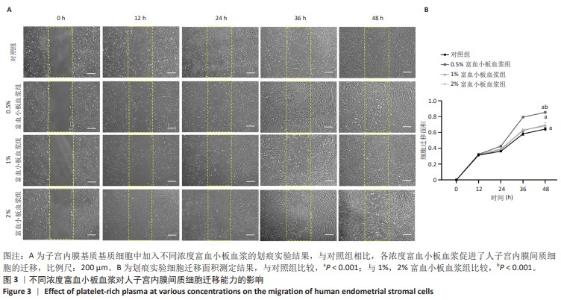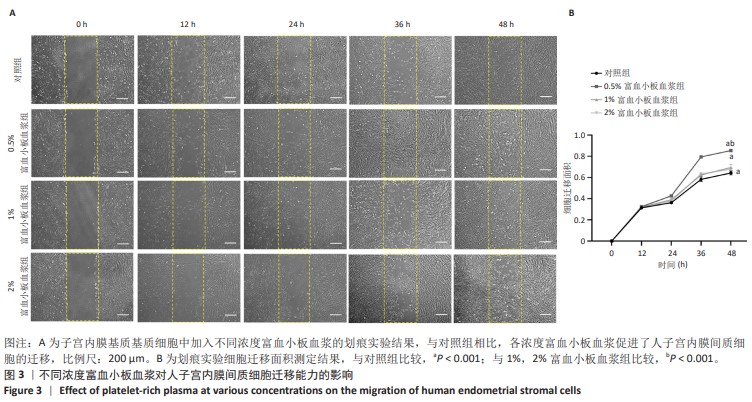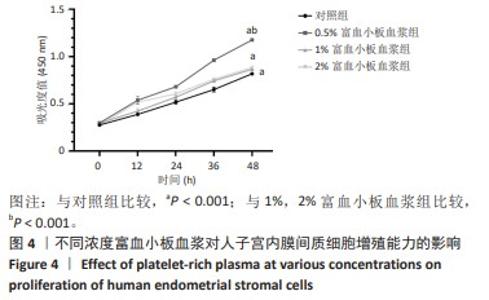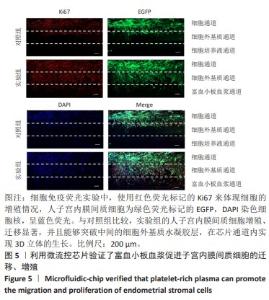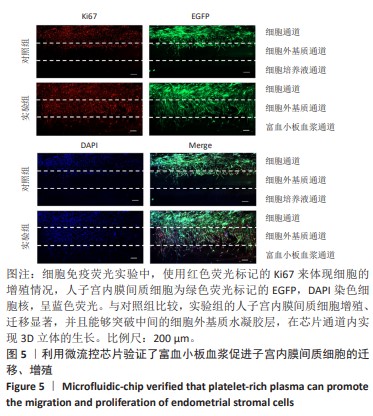[1] GOENKA A, KHAN F, VERMA B, et al. Tumor microenvironment signaling and therapeutics in cancer progression. Cancer Commun (Lond). 2023;43(5): 525-561.
[2] LUO Q, SHANG K, ZHU J, et al. Biomimetic cell culture for cell adhesive propagation for tissue engineering strategies. Mater Horiz. 2023;10(11): 4662-4685.
[3] EPPLEY BL, WOODELL JE, HIGGINS J. Platelet quantification and growth factor analysis from platelet-rich plasma: implications for wound healing. Plast Reconstr Surg. 2004;114(6):1502-1508.
[4] MOUANNESS M, ALI-BYNOM S, JACKMAN J, et al. Use of Intra-uterine Injection of Platelet-rich Plasma (PRP) for Endometrial Receptivity and Thickness: a Literature Review of the Mechanisms of Action. Reprod Sci. 2021;28(6):1659-1670.
[5] SALA F, FICORELLA C, OSELLAME R, et al. Microfluidic Lab-on-a-Chip for Studies of Cell Migration under Spatial Confinement. Biosensors (Basel). 2022;12(8):604.
[6] KIM MK, YOON JA, YOON SY, et al. Human Platelet-Rich Plasma Facilitates Angiogenesis to Restore Impaired Uterine Environments with Asherman’s Syndrome for Embryo Implantation and Following Pregnancy in Mice. Cells. 2022;11(9):1549.
[7] LI Y, WANG J, SONG SR, et al. Models for evaluating glioblastoma invasion along white matter tracts. Trends Biotechnol. 2024;42(3):293-309.
[8] MROZIKIEWICZ AE, OŻAROWSKI M, JĘDRZEJCZAK P. Biomolecular Markers of Recurrent Implantation Failure-A Review. Int J Mol Sci. 2021;22(18):10082.
[9] SMITH SD, CHOUDHURY RH, MATOS P, et al. Changes in vascular extracellular matrix composition during decidual spiral arteriole remodeling in early human pregnancy. Histol Histopathol. 2016;31(5):557-571.
[10] CHANG Y, PENG J, ZHU Y, et al. How platelet-rich plasma (PRP) intra-uterine injection improve endometrial receptivity of intrauterine adhesions in women: A time-series-based self-controlled study. J ReprodImmunol. 2023;156:103796.
[11] WHITESIDES G M, OSTUNI E, TAKAYAMA S, et al. Soft lithography in biology and biochemistry. Annu Rev Biomed Eng. 2001;3:335-373.
[12] SATYANARAYANA S, KARNIK RN, MAJUMDAR A. Stamp-and-stick room-temperature bonding technique for microdevices. J Microelectromech Syst. 2005;14(2):392-399.
[13] 单桂秋,施琳颖,李艳辉,等.自体富血小板血浆制备技术专家共识[J].中国输血杂志,2021,34(7):677-683.
[14] STREIT-CIEĆKIEWICZ D, KOŁODYŃSKA A, FUTYMA-GĄBKA K, et al. Platelet Rich Plasma in Gynecology-Discovering Undiscovered-Review. Int J Environ Res Public Health. 2022;19(9):5284.
[15] BERNDT S, TURZI A, PITTET-CUÉNOD B, et al. Autologous Platelet-Rich Plasma (CuteCell PRP) Safely Boosts In Vitro Human Fibroblast Expansion. Tissue Eng Part A. 2019;25(21-22):1550-1563.
[16] LIN Y, QI J, SUN Y. Platelet-Rich Plasma as a Potential New Strategy in the Endometrium Treatment in Assisted Reproductive Technology. Front Endocrinol (Lausanne). 2021;12:707584.
[17] GIUSTI I, RUGHETTI A, D’ASCENZO S, et al. Identification of an optimal concentration of platelet gel for promoting angiogenesis in human endothelial cells. Transfusion. 2009;49(4):771-778.
[18] ZANOTELLI MR, ZHANG J, REINHART-KING CA. Mechanoresponsive metabolism in cancer cell migration and metastasis. Cell Metab. 2021;33(7):1307-1321.
[19] HUANG Y, HONG W, WEI X. The molecular mechanisms and therapeutic strategies of EMT in tumor progression and metastasis. J Hematol Oncol. 2022;15(1):129.
[20] VALDOZ JC, JOHNSON BC, JACOBS DJ, et al. The ECM: To Scaffold, or Not to Scaffold, That Is the Question. Int J Mol Sci. 2021;22(23):12690.
[21] DOOLIN MT, MORIARTY RA, STROKA KM. Mechanosensing of Mechanical Confinement by Mesenchymal-Like Cells. Front Physiol. 2020;11:365.
[22] MURPHY KJ, REED DA, CHAMBERS CR, et al. Cell-derived Matrix Assays to Assess Extracellular Matrix Architecture and Track Cell Movement. Bio Protoc. 2022;12(24):e4570.
[23] HU B, WANG L, SUN N, et al. Leukoreduced PRP enhanced proliferation and ECM production yet inhibited senescence, inflammation, and multi-differentiation potential of AFSCs by downregulating HMGB1. Immunopharmacol Immunotoxicol. 2023;45(6):730-741.
[24] AHN J, YOON MJ, HONG SH, et al. Three-dimensional microengineered vascularised endometrium-on-a-chip. Hum Reprod. 2021;36(10):2720-2731.
[25] CHUCHUY J, ROGAL J, NGO T, et al. Integration of Electrospun Membranes into Low-Absorption Thermoplastic Organ-on-Chip. ACS Biomater Sci Eng. 2021;7(7):3006-3017.
[26] LENHART AE, KENNEDY RT. Evaluation of Surface Treatments of PDMS Microfluidic Devices for Improving Small-Molecule Recovery with Application to Monitoring Metabolites Secreted from Islets of Langerhans. ACS Meas Sci Au. 2023;3(5):380-389.
[27] DING S, ZHANG H, WANG X. Microfluidic-Chip-Integrated Biosensors for Lung Disease Models. Biosensors (Basel). 2021;11(11):456.
[28] XIAO S, COPPETA JR, ROGERS HB, et al. A microfluidic culture model of the human reproductive tract and 28-day menstrual cycle. Nat Commun. 2017;8:14584.
[29] SONG Y, BURNS GW, JOSHI NR, et al. Spheroids as a model for endometriotic lesions. JCI Insight. 2023;8(11):e160815.
[30] BURTON GJ, TURCO MY. Joan Hunt Senior award lecture: New tools to shed light on the ‘black box’ of pregnancy. Placenta. 2022;125:54-60. |
